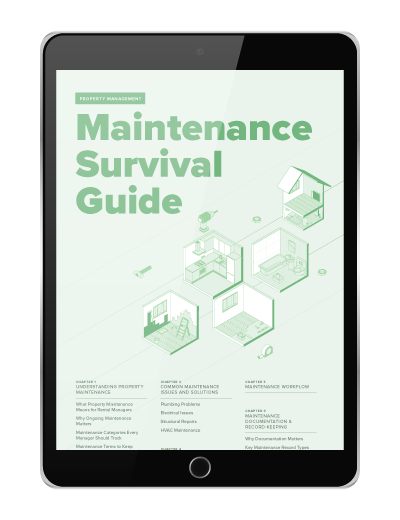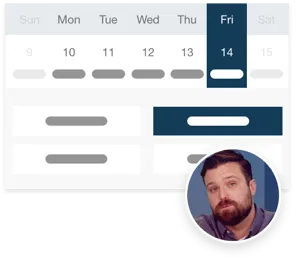If you’ve been in the property management business for a while, you’ve probably witnessed firsthand how proper preventive maintenance can make or break a property’s success. Too often, property managers get trapped in the costly cycle of reactive maintenance, scrambling to address issues that could have been prevented with regular upkeep.
This guide will help you develop and implement an effective preventive maintenance strategy that saves money, preserves property value, and keeps tenants happy.
Why Preventive Maintenance Matters
The benefits of preventive maintenance extend far beyond cost savings. You’ll also be able manage properties with:
- Reduced Emergency Repairs: Regular maintenance catches small issues before they become major problems. A simple low-cost HVAC tune-up can prevent a costly emergency replacement in the middle of summer.
- Extended Equipment Lifespan: Well-maintained systems last significantly longer. I’ve seen properly maintained water heaters last 15+ years, while neglected units often fail within 8-10 years.
- Higher Property Values: Properties with documented maintenance histories typically command higher resale values and attract better tenants.
- Improved Tenant Satisfaction: Happy tenants are long-term tenants. Regular maintenance shows you care about their comfort and safety, leading to better retention rates and reduced vacancy costs.
Preventive Maintenance Areas: Main Areas to Focus On
Here are the core areas to focus your upkeep on to keep your properties in good shape:
HVAC Systems
Your HVAC system requires attention throughout the year to maintain peak performance:
- Quarterly Tasks:
- Replace air filters
- Clean return air grilles and supply vents
- Check thermostat operation
- Inspect condensate drain lines
- Semi-Annual Tasks:
- Professional inspection and cleaning of indoor and outdoor units
- Check refrigerant levels
- Clean evaporator and condenser coils
- Lubricate moving parts
Plumbing Systems
Water damage can be catastrophically expensive. Focus on these key areas:
- Monthly Tasks:
- Check for visible leaks around fixtures and pipes
- Listen for running toilets or dripping faucets
- Inspect caulking around tubs and sinks
- Quarterly Tasks:
- Clean drain lines with enzymatic cleaner
- Check water pressure
- Inspect water heater for signs of corrosion
- Test sump pumps and backup systems
Building Envelope and Structure
- Bi-Annual Tasks:
- Inspect roof condition and drainage
- Check window and door seals
- Examine exterior walls for cracks or damage
- Clean gutters and downspouts
- Inspect foundation for cracks or water intrusion
Creating Your Preventive Maintenance Schedule
The key to successful implementation is a well-organized schedule. Here’s a framework that works regardless of if you’re new to the industry or a seasoned property manager:
Daily Monitoring
- Walk the property exterior
- Check common areas
- Note any unusual sounds or smells from equipment
- Address tenant maintenance requests promptly
Weekly Tasks
- Test emergency lighting
- Check security systems
- Inspect playground equipment (if applicable)
- Clean common area HVAC returns
Monthly Tasks
- Test smoke detectors and carbon monoxide alarms
- Check fire extinguishers
- Inspect door closers and locks
- GFCI outlet testing
- Pest control inspection
Quarterly Tasks
- HVAC maintenance
- Plumbing system inspection
- Roof inspection
- Landscape maintenance
- Deep cleaning of common areas
Tools and Technology for Maintenance Management
Modern property management requires modern tools. However, not all software is up to the task, so you’ll want to focus any tech investment you make into solutions that have these capabilities:
Choose a comprehensive system that includes:
- Work order management
- Preventive maintenance scheduling
- Mobile accessibility
- Vendor management
- Document storage
Even for smaller portfolios (under 100 units), a dedicated property management software platform, such as Buildium, is well worth the investment, shaving time of each maintenance job and helping you manage both requests and vendors, so that you get the best service for the best price.
Documentation Best Practices for Property Management Preventive Maintenance
To keep your records accurate and easier to evaluate when you review past work orders and vendor track records, try these tips:
- Take before and after photos of all maintenance work
- Keep detailed service records
- Document all tenant communications
- Maintain digital copies of warranties and manuals
- Create video tutorials for routine maintenance tasks
Taking the Next Steps with Your Property management Preventive Maintenance Checklist
Implementing a preventive maintenance program requires initial investment in time and resources, but the long-term benefits far outweigh the costs. Start by focusing on your most critical systems and gradually expand your program as you develop your maintenance rhythm.
Remember: every dollar spent on preventive maintenance can save you several in reactive repairs. More importantly, it provides peace of mind knowing your properties are well-maintained and your tenants are satisfied.
Take action today: Begin by inventorying your properties’ major systems and creating a basic maintenance schedule. Then, gradually build out your program using the guidelines in this post. Your future self (and your bottom line) will thank you.
Read more on Maintenance

